Before the 1820’s, public eating spaces were limited to taverns and hotels that catered to male clientele. Then, American fine-dining and casual restaurants as we know them emerged, but these too excluded women from equal participation as admittance required a male chaperone.
Nowadays, women continue to flourish as industry leaders, operators, and chefs. But how did we grow from a place of exclusion to women thriving in the foodservice industry? One unexpected contribution that allowed women access into the public foodservice sphere was the American tea room.
Social Change in the 19th Century
The beginning of the 1800s started on the right track as women managed taverns, albeit while staying out of sight of customers. Additionally, women of all ethnicities worked in the back of house. These women were invisible to the public as the front of house kept a pointedly male face. “Respectable” women were not welcome as guests. They were told that entering a tavern would likely result in harassment, assault, and a bad reputation.
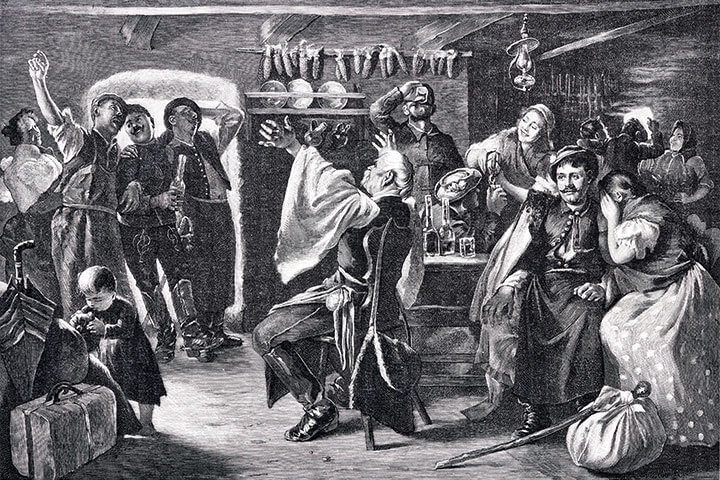
As the decade progressed, the modern restaurant emerged. At the same time, the Temperance Movement took hold which preached restraint in appetites and behavior, driven by Christian virtues of prudence and chastity. The women of the Temperance Movement were especially concerned with alcohol and its connection to domestic violence. Additionally, this social reform movement felt that accommodating women in public spaces like restaurants was a sign of indecency.
Women who were allowed in restaurants had two things in common: they were white and accompanied by a male chaperone. Common wisdom of the time advocated to keep women separate for reasons such as potentially distracting businessmen from their lunch meetings.
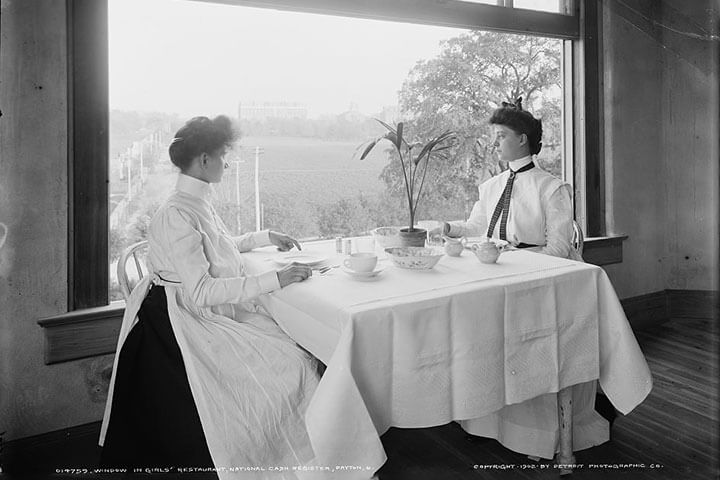
To accommodate the growing segment of middle-class white women who were spending more and more time outside the home during the day, some establishments created women-only dining sections. However, ladies were required to use a separate door and remained out of sight from the main dining room.
A Way of Life That Was Destined to Change
In the later part of the 19th century, some ladies yearned to challenge the status quo, end the tradition of sex-segregated restaurants, and participate in the foodservice industry.
For instance, in 1895 the first vegetarian restaurant in America opened in New York City. This restaurant, simply called Vegetarian Restaurant No. 1, was managed by a German-born woman named Louise Volkmann. Ms. Volkmann additionally participated in social causes such as women’s right to vote and fair labor practices. She volunteered in prisons and hospitals to further her reach and help as many underserved people as possible.
Then, in the early 1900s, the advent of the ladies tea room served as a solution to social restrictions placed on women in the 1800s.
Tea Rooms of the Early 1900s
With women tired of being turned away from restaurants without their husband, brother, or father, some took matters into their own hands — and homes. As their position in life required them to master the art of hosting guests and preparing meals, monetizing these skills led to a brighter future for many people.
Many American tea rooms of the early 1900s were located in a woman’s home or garden. Others had to think further outside the box, resourcefully setting up shop in barns, outbuildings connected to gas stations, abandoned buildings, or even in gristmills. These alternative locations required owners to bring all their own equipment, including water.
Tea Room Aesthetics and Service
Whether in a quaint parlor room or gristmill, tea rooms were decorated and furnished with the comforts of home in mind. Every generation longs for simpler times and the women of the early 1900s were no exception. The look can best be described as ‘nostalgic colonial’ as it was kept simple and homey.
Common decorative objects included hook rugs, spinning wheels, antiques, flowers, candles, and homemade crafts. In fact, some historians call back to early American tea rooms as the inspiration for comfortable elements we find in many of today’s modern restaurants. Tea room proprietors wanted their space to feel as comfortable as their guests’ own dining rooms.
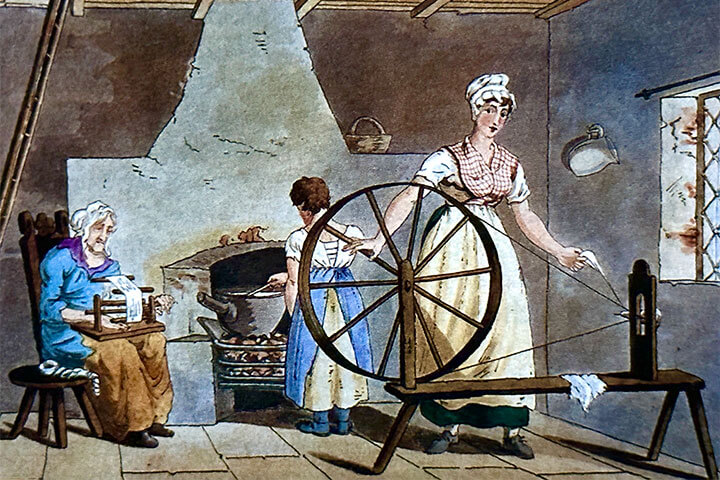
Food was kept simple, light, and dainty including toasts, sandwiches, salads, and sweets. In a twist of irony, tea rooms didn’t always serve tea. More than likely the menu would instead include grape juice and lemonade. Some ambitious proprietors additionally took to selling antiques and handmade crafts to guests. While men were not forbidden entrance by any means, they chose not to eat at tea rooms because they were too feminine and often didn’t serve alcohol.
Patrons appreciated the traditional hospitality, simplicity of style, and homey atmosphere. It allowed them a chance to break free from modern life and burgeoning technology for an hour during the day while enjoying a meal and socializing with friends. Additionally, it gave women with jobs the chance to eat out at lunch, as they were otherwise turned away from establishments.
Finding a Voice in Tea Rooms
Tea room proprietors were largely middle-class white women who wanted a career, wives looking to supplement family income, widowers, and school teachers who set up shop during their summer break. There was also a segment of owners who were African American, as many white-owned tea rooms participated in racial discrimination.
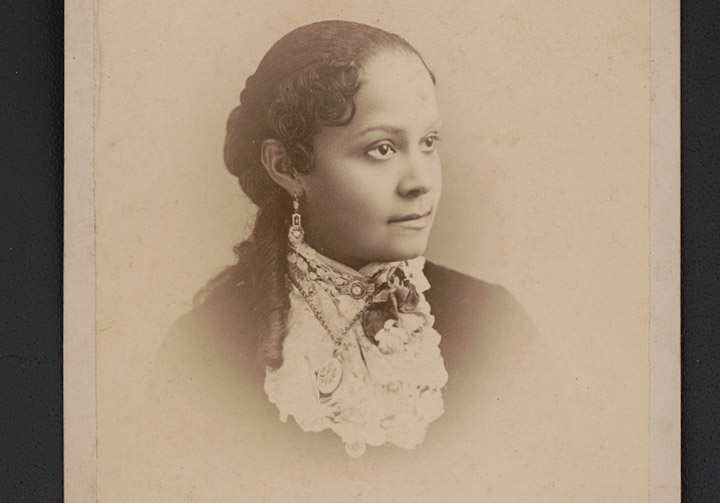
Like the tea rooms of white, middle-class women, many African American tea rooms were largely operated by women with social status. Some focused on luxury, offering the finest smallwares, linens, and china, while others took a less aggressively elite approach.
However, the tone of their tea rooms varied a little from those of white women. For instance, African American women-owned tea rooms had male patrons as well and used this space to gather for advances in social and political change. They would frequently host groups such as the NAACP Women’s Auxiliary and the Negro Business League. Additionally, the African American women-run establishments operated longer hours, offered breakfast to dinner service, and sometimes offered dancing and music.
From Servitude to Leadership, 1920–1950
Turning unescorted women away from restaurants didn’t start going out of style until the 1920s. This period also marked the height of tea room popularity, bathed in feminism and self-expression. At this time, the Temperance Movement had culminated in Prohibition, which made alcohol-free tea rooms more popular, as many other establishments had to close without alcohol sales.
Synonymously, women gained a voice in the foodservice industry as owners, managers, and executives. Soon, women were invited to speak at National Restaurant Association conferences. Then, in 1940, Grace E. Smith was named the first female president of the NRA, marking a huge achievement from where women had started at the turn of the century.
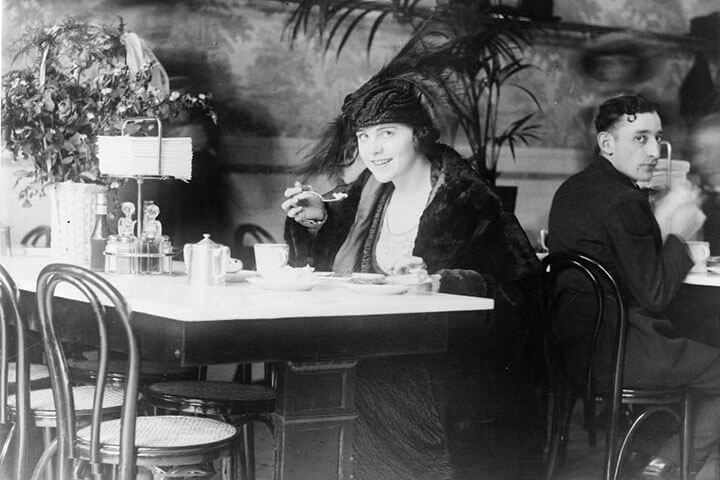
Foodservice Paving the Way for Equality
The tea rooms of the early 1900s provided a way for women to enter and enjoy the foodservice industry while maintaining their own autonomy. While most tea rooms closed by the 1950s, their effects echoed throughout the close of the century as there was still much work to be done.
We would like to thank all the bold women of times past for their brave, entrepreneurial spirit. And to those today, who work towards creating an ideal vision of inclusiveness and equality for all genders, races, and sexualities within the foodservice industry.

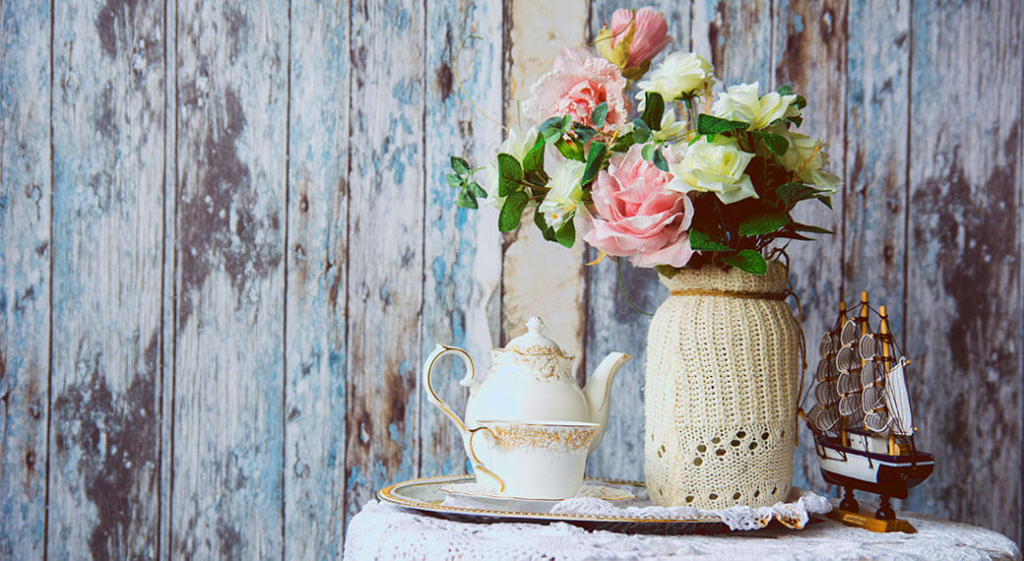


When Were Tea Rooms Popular? [2024] - Tea Brands
- Tea Brands